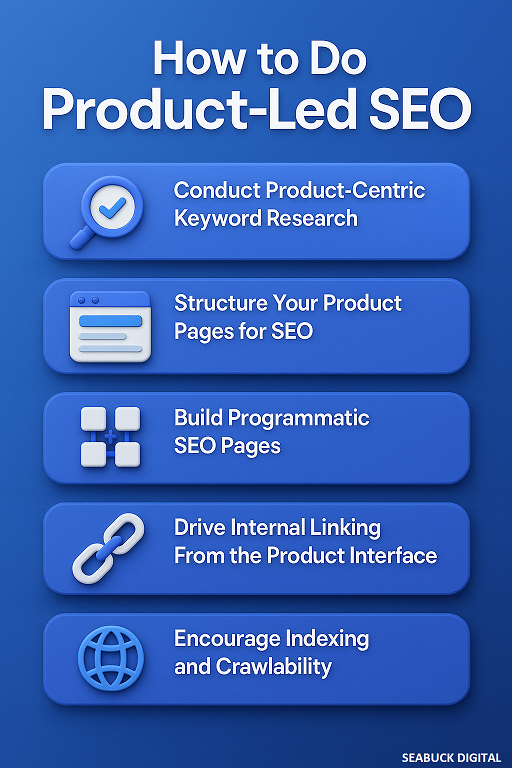
Introduction
If you want traceable, research-style answers with live web citations, Perplexity is the tool to lean on. If you want fluid conversations, creative writing, coding help, or customizable assistants, ChatGPT is the better all-rounder. To make Perplexity AI vs ChatGPT Differences more clear, pick Perplexity for verified facts and quick lookups; pick ChatGPT for creative output, interactive workflows, and custom GPTs.
Why these 6 differences matter
Think of Perplexity and ChatGPT like two specialist chefs in one kitchen: one is obsessed with perfect sourcing and recipe citations, the other improvises delicious, original dishes that delight people. The six differences below are the clearest way to decide which chef you need for your meal.
Who should read this
Researchers, journalists, content creators, product managers, students, and marketers who want practical, quick decisions, not a lab report.
Quick decision checklist
- Need citations? → Perplexity.
- Need a marketing copy or a short screenplay? → ChatGPT.
1. Primary Purpose & Core Identity
Perplexity: The “Answer Engine”
Perplexity is built as an answer-first research assistant — it crawls the web, synthesizes findings, and presents answers with evidence-style output. It’s engineered for verification and speed, not for long, freeform storytelling.
ChatGPT: The “Conversational AI”
ChatGPT focuses on dialogue, long-form generation, coding, and creative tasks. It’s designed to role-play, brainstorm, and produce polished prose — a conversational Swiss Army knife.
Real-world example: Research vs. Writing
Need a referenced summary of the latest AI paper? Use Perplexity. Need a landing page, ad copy, or a script revised in five tones? Use ChatGPT.
2. Source Attribution & Accuracy (The Citation Divide)
How Perplexity shows its work
Perplexity adds inline source links and citations into most answers so you can click and verify the original article or snippet — it’s designed to “show its work” by default. That’s a huge win for anyone who needs traceability.
How ChatGPT handles sources
ChatGPT can provide web-based citations when it’s running in a mode that searches the live web (or when plugins are used), but its default generative output is model-based and may not include explicit, clickable citations unless you enable the browsing/search features.
Practical tips to avoid hallucinations
Always treat a single AI answer as a draft: verify key claims by clicking sources (Perplexity) or using the browsing/plugin-enabled ChatGPT mode for live links.
3. Data Freshness & Real-Time Access
Perplexity’s live-web strengths
Perplexity actively queries the web to retrieve current news, stats, or live information — that makes it excellent for up-to-the-minute queries like market headlines, recent research, or breaking events.
ChatGPT’s browsing, plugins, and modes
ChatGPT can also access the web (via ChatGPT Search or plugins), but historically that capability depends on the mode and whether browsing is enabled for your account. When enabled, ChatGPT blends model knowledge with live searches.
When freshness changes the decision
If “up-to-the-minute” matters (earnings, news, live stats), prefer Perplexity’s default search-centric flow — unless you’ve explicitly activated ChatGPT’s browsing/search tools.
4. Creative Content Generation vs. Information Retrieval
Where Perplexity shines (fact synthesis)
Perplexity produces tight, well-structured, evidence-backed summaries. It’s like a librarian that hands you a neat report instead of an essay contest winner.
Where ChatGPT shines (creative generation)
If you want a human-feel blog post, scripted video, poem, or complex multi-file code, ChatGPT’s architecture and instruction-following make it the creative champion.
Hybrid workflows that get the best of both
A smart workflow: use Perplexity to gather citations and facts, then feed those verified facts into ChatGPT to craft persuasive, stylistic content — research + polish.
5. Underlying Models & Flexibility
Perplexity’s multi-model approach (Sonar + others)
Perplexity operates both with its in-house Sonar models and allows access to other advanced backends in certain tiers — aiming to mix speed, retrieval, and configurable model choices. Sonar itself is optimized for search-style Q&A.
ChatGPT’s in-house GPT family
ChatGPT runs on OpenAI’s GPT family (GPT-4.x, GPT-4o, GPT-4.1, etc.). That gives you a cohesive ecosystem and predictable behaviors, plus OpenAI’s tool integrations.
What model choices mean for accuracy, cost, and control
Multi-model platforms let you switch between speed, cost, and depth; single-vendor stacks (like ChatGPT) prioritize tight integration, predictable updates, and richer tooling.
6. Unique Features & Workspaces
Perplexity: Spaces, Focus Modes, Pages
Perplexity offers Spaces (project-focused workspaces) and Focus Modes (e.g., Academic, Reddit, YouTube) to tune research behavior and organize threads — great for deep research projects.
ChatGPT: GPTs (Custom GPTs), plugins, and tools
ChatGPT’s big advantage is Custom GPTs — you can build and share purpose-built assistants — plus an expanding plugins ecosystem that plugs into third-party services and datasets.
Team & enterprise features at a glance
Both platforms have enterprise offerings — Perplexity focuses on integrated knowledge connectors (SharePoint, Google Drive), while ChatGPT brings robust API/tooling and GPT customization at scale.
SEO & E-E-A-T: Why source transparency matters
For SEO and E-E-A-T (Experience, Expertise, Authoritativeness, Trustworthiness), the ability to cite sources and surface verifiable facts is priceless. Perplexity’s default citation-first style maps naturally to E-E-A-T needs; with ChatGPT you’ll need to pair generation with verification (either built-in browsing or manual source-checking).
Limitations, Risks & Legal/Trust Flags
Known issues around publisher content & attribution
Perplexity’s aggressive content surfacing has drawn scrutiny from publishers over attribution and content use — a reminder that legal and ethical boundaries still matter for research engines. Always check publisher terms for reuse.
Hallucinations, safety routing, and moderation
ChatGPT can hallucinate if used without browsing or source checks; OpenAI also applies safety routing and moderation that can change model responses in sensitive contexts. Treat both tools like assistants, not oracles.
How to Choose: A Quick Decision Flow
3 simple scenarios & recommended tool
- Academic research / fact-backed report → Perplexity (fast citations).
- Marketing copy, scripts, creative drafts → ChatGPT (creative control).
- Hybrid (research + publishable content) → Gather sources in Perplexity → write & style in ChatGPT.
All the Differences between Perplexity and ChatGPT
| Feature / Category | Perplexity AI | ChatGPT |
| Core Identity | Branded as an “Answer Engine”, focused on research-first Q&A. | Branded as a “Conversational AI”, designed as a general-purpose assistant. |
| Primary Purpose | Retrieves and summarizes verified information with citations. | Excels at creative generation, multi-turn dialogue, coding, and storytelling. |
| Source Attribution | Provides always-on citations and inline references by default. | Citations only available in browsing/search modes; default text is model-based. |
| Accuracy & Reliability | Stronger for fact-checking and academic/professional research. | Risk of hallucinations without verification; best for drafting ideas and narratives. |
| Data Freshness | Has real-time web access by default (news, events, stats). | Knowledge depends on training cut-off; real-time web access available in browsing mode (paid/pro features). |
| Content Style | Structured, concise, report-like summaries. | Conversational, fluid, human-like creative text. |
| Best Use Cases | Research papers, academic projects, live data queries, citation-backed content. | Blog posts, ads, marketing copy, coding, creative writing, brainstorming. |
| Underlying Models | Uses its own Sonar models + integrates GPT-4, Claude 3.5, etc. | Relies solely on OpenAI GPT models (GPT-4o, GPT-4.1, etc.). |
| Customization | Limited personalization; focus is accuracy + retrieval. | Supports Custom GPTs, plugins, and advanced workflows. |
| Unique Features | Spaces for research threads, Focus Modes (Academic, Reddit, YouTube). | Custom GPTs, plugin ecosystem, multimodal input/output. |
| Enterprise/Teams | Connects with Google Drive, Slack, SharePoint for research collaboration. | Offers API, GPT Store, team plans, and enterprise control. |
| Strengths | Transparency, citations, trust-building for E-E-A-T SEO. | Creativity, versatility, content generation, conversational flow. |
| Weaknesses | Limited for creative/narrative writing. | Less reliable for fact-based accuracy without browsing. |
| Best Fit Audience | Researchers, students, journalists, knowledge workers. | Marketers, writers, developers, educators, creators. |
| Overall Positioning | The researcher’s assistant — fact-first. | The creative collaborator — idea-first. |
Conclusion
Perplexity and ChatGPT are different tools solving overlapping problems. Perplexity is your evidence-minded researcher; ChatGPT is your creative collaborator. Use them together and you’ll move from uncertain facts to polished content faster than either tool alone.
FAQs
Q1 — Can I get Perplexity-style citations from ChatGPT?
Yes — when ChatGPT runs in a browsing/search-enabled mode or uses plugins, it can return web links and source snippets. But that mode is not the default for generative outputs, so double-check settings.
Q2 — Is Perplexity better than ChatGPT for legal or medical research?
Perplexity’s citation-first approach helps with source tracking, but neither tool replaces professional advice. Always validate with peer-reviewed sources or licensed professionals.
Q3 — Which is cheaper to use at scale?
Costs depend on the models, API usage, and context windows you need. Perplexity’s Sonar is optimized for cost/speed for search-style queries; ChatGPT’s cost varies by chosen GPT model and plan. Check each vendor’s pricing for your workload.
Q4 — Can I combine outputs from both in one workflow?
Absolutely — a common workflow is: Perplexity for research + verified citations → pass verified facts into ChatGPT for creative framing and polishing. It’s fast and lowers the risk of hallucinated claims.
Q5 — Are there any legal risks using content produced by these AIs?
Yes — copyright and attribution issues can arise (some publishers have challenged AI platforms). Use cited sources, give credit, and if you republish, verify rights with the original publisher.










